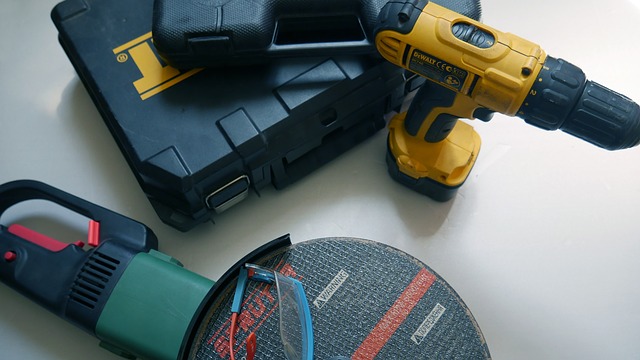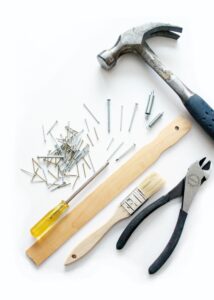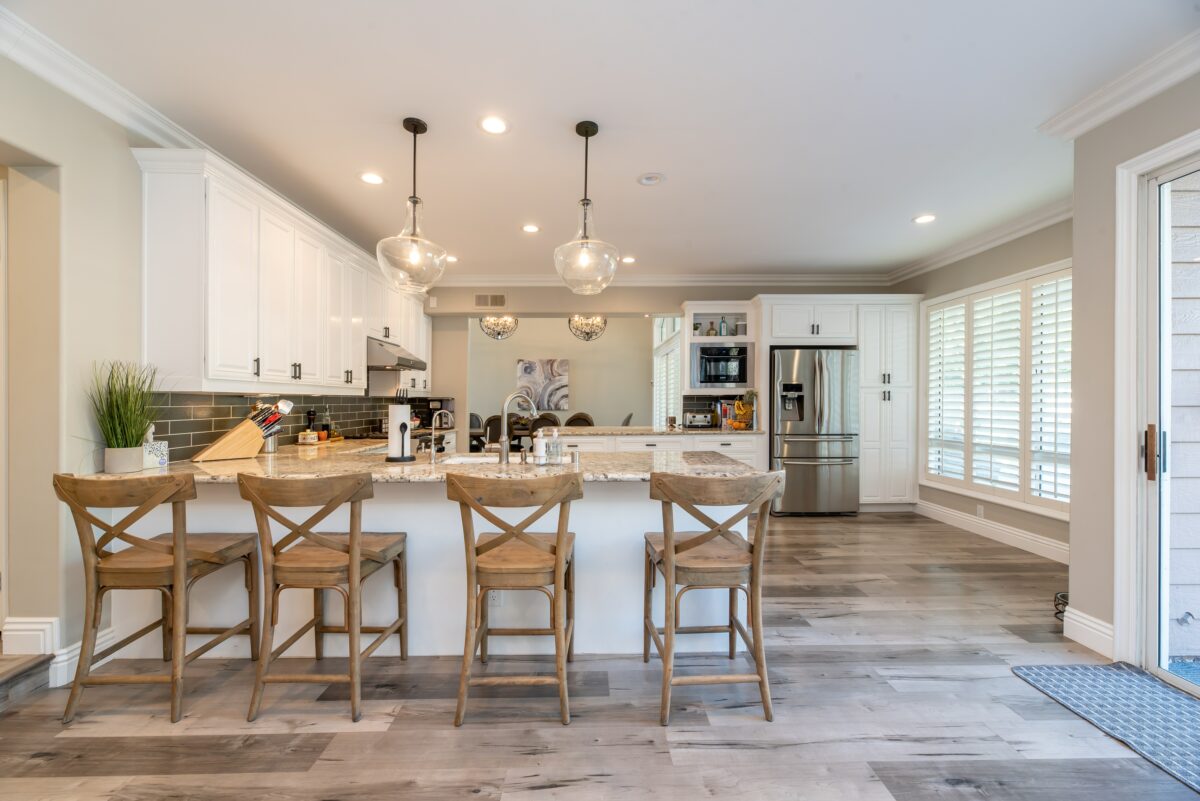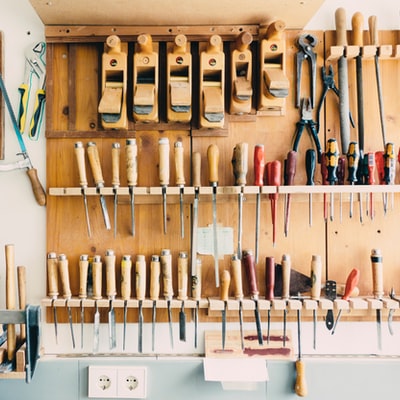Home accessibility is important for every member of your family, but it’s a critical element of comfort and safety for those with physical disabilities. Paying attention to layout and making investments in features that make it easier for those who use wheelchairs or walkers will not only provide more mobility, but also help them stay safe and feel more at ease in their surroundings.
While there are a lot of major renovations you can make to improve your abode’s accessibility, there are a lot of DIY-friendly projects handy homeowners can take on themselves. We’ve broken down the do-it-yourself tasks you can add to your to-do list by the different areas in your home you’ll need to address — as well as the home-accessibility projects you should always leave to the pros.

Outside
Replace gravel walkways with concrete or stone. Gravel is a tough terrain for people using wheelchairs and walkers to traverse. Removing it and replacing it with a smoother surface is a tedious to-do item, but it will make a huge difference for a loved one with a disability.
Smooth out broken or uneven sidewalks. Adding a new layer of concrete is a simple fix for walkways on your property. To mend city sidewalks that line your yard, you may need to contact your local government.
Add raised flower beds to make gardening simpler. Building raised planters will make growing a garden much more comfortable for those who have difficulty lowering themselves down to ground level.
Add ramps to entrances. Building a wheelchair ramp is a surprisingly DIY-friendly project, but if it seems like too big of a task to take on, hire a professional.
Build a covering for an open driveway. If you don’t have a garage, build a carport or another structure that will protect your loved one from the elements while they get in and out of the car. If possible, create a covered walkway that leads from where you park your car to your home.
Move the mailbox next to the entrance of the home. This prevents the need to go to the end of the driveway to grab the mail each day.
Add a lower peephole to your front entrance. That way, every member of your family will be able to see who’s at the door. You may even want to consider adding a video doorbell, which allows homeowners to see visitors via their smartphone.
Bedroom
Replace furniture to accommodate the disability. Wheelchair users will benefit from a bed that sits lower and a desk with a wide opening that easily fits the wheelchair. Those who use walkers may benefit from a higher bed and a raised desk chair, since they won’t have to lower themselves down as far as with low-level models.
Lower hanging rods in closets. This will make getting dressed and putting away clothes easier for those who use a wheelchair.
Add grab bars next to the bed to make getting in and out easier. Grab bars will make this process safer and more comfortable.
Make communication easier with walkie-talkies. Should a loved one need help but it’s difficult for them to leave the bedroom, having a direct mode of communication with other members of the household is a huge convenience.
Move the bed and other large pieces of furniture against the walls. This will create a more open layout that’s easier for wheelchair- and walker-users to navigate. You can also downsize the furniture to take up less space.

Bathrooms
Install grab bars. They should be placed next to the toilet, near the bathtub, and in the shower.
Add a shower seat. These make bathing safer and more comfortable for people with disabilities.
Replace the showerhead with a handheld version. Showering will be much simpler with a faucet your loved one can hold.
Install a toilet riser. These make getting on and off the toilet easier by raising the seat a few inches, and they also have handles on the sides for safety.
Replace round drawer and cabinet pulls with handles. Lever-style door handles are easier to grab from any height, and they’re especially helpful for those who have difficulties with gripping objects, such as individuals with cerebral palsy (CP).
Reverse the bathroom door so it opens into the hallway rather than the bathroom. Doors that open into bathrooms can make mobility difficult for wheelchair- and walker-users, since they take up space. Keep in mind that changing the way a door opens usually also involves changing out the frame.
Replace the bathroom door with a curtain. This isn’t always a necessary project, but it can be extremely helpful for those with serious mobility and safety concerns, like seniors who risk falling.
Add non-slip flooring. You don’t have to carpet your bathroom, but for individuals who use a walker or move in and out of a wheelchair in the bathroom, falls on slick flooring, like tile, are a risk. Fit the floor with a slip-resistant mat (be sure to secure it to the floor underneath), or replace the flooring with something less slick, like vinyl or cork.
Kitchen
Make the sink more accessible. Removing cabinet doors below the sink will make it easier for a wheelchair to pull up in front of it, and switching to a faucet with only one lever will prevent loved ones from having to switch between knobs for temperature control. Be sure to remove any toxic materials stored under the sink to prevent kids and pets from accessing them, and cover pipes with insulation or keep them otherwise separated to prevent anyone from getting burned.
Add lazy susans to low cabinets and the bottom shelf of the refrigerator. This prevents needing to reach too far into these spaces for items. Keep your loved one’s most-used items within reach as much as possible.
Add low surfaces that make eating and food prep simpler. Advanced DIYers can add low pull-out surfaces to high countertops, but adding a card table to the end of the counter works just as well.
Throughout the House
Add miniature ramps at entryways. Raised thresholds can make moving from one part of the house to another difficult. Place mini ramps over flights containing only a few steps, and even out areas that are slightly raised due to flooring changes or other barriers.
Replace round door knobs with levers. They’re easier to grab no matter an individual’s height or gripping ability.
Create a more open layout by rearranging your furniture. This will help loved ones who use a wheelchair or walker move around more easily.
Remove area rugs, or secure them to the floor. Rugs can make it more difficult for wheelchair-users to move around, and if they’re not secured to the floor, they’re even more difficult to cross and present tripping hazards for walker-users.
Widen doorways. This isn’t always a DIY project, but if you have wooden frames in doorways, you can remove them to create more space. Keep in mind that you’ll have to remove doors for this project, so this is best suited for entryways between common spaces, like from the dining room to the living room, rather than bedrooms and bathrooms.
Add wheelchair-level lamps. Light switches may be hard to reach for individuals in wheelchairs, and adding lamps is a DIY-friendly fix.
Add length to pull cords that open blinds and curtains. You can also install a long wand that twists blinds open.
Home Accessibility Projects that Require Professional Help
Due to danger and difficulty, always work with a professional contractor for these home-accessibility projects. Call an expert for help if you’re:
Adding a stairlift or elevator. Both of these projects require structural and electrical work that should only be done by licensed pros.
Lowering countertops. This isn’t necessarily a dangerous project (unless you have counters made of granite, marble, or another heavy material), but it’s a huge undertaking.
Lowering cabinets. This is a big job you’re better off handing over to a professional.
Lowering outlets and light switches. Moving outlets and wall switches to a wheelchair-accessible height is a great way to make your home more accessible, but leave this task to a licenced electrician.
Adding intercoms to rooms. Intercoms in bedrooms, bathrooms, and other frequently-used areas of the home will help reduce the need to move throughout the home for those with extremely limited mobility, but they require electrical work and should only be installed by a professional.
Replacing showers, bathtubs, and toilets with disability-friendly options. If done incorrectly, you could be left with a big mess on your hands.
Making major flooring changes. Unless you have a lot of experience, replacing major sections of flooring is usually best left to a pro. Plus, if you need to change the floor in multiple rooms, professional installers will make sure that everything is even so that there are no barriers that make it difficult to go from one room to the next.
There are a lot of ways to make your home a more accessible space for every member of your family, and many are DIY projects that don’t require a lot of skill or expense. Be sure to reach out to a professional for any project that is potentially dangerous — the added cost will be a worthwhile investment in making your home a disability-friendly place for loved ones of all abilities.













